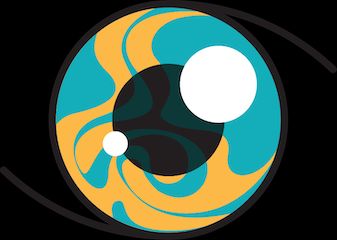Lectin-rich foods like legumes and grains are almost always cooked before eating. Most of these are high in vitamins, minerals, fiber, antioxidants, and more. The benefits of these healthy nutrients far outweigh any negative effects of trace amounts of lectins.
Lectins are a family of proteins found in almost all foods, especially legumes and grains.
Some people claim that lectins cause increased gut permeability and drive autoimmune diseases.
While it’s true that certain lectins are toxic and cause harm when consumed in excess, they’re easy to get rid of through cooking.
As such, you may wonder if lectins pose a health risk.
This article tells you everything you need to know about lectins.
While animal lectins play various roles in normal physiological functions, the role of plant lectins is less clear. However, they seem to be involved in plants’ defenses against insects and other herbivores.
Some plant lectins are even toxic. In the case of the poison ricin — a lectin from the castor oil plant — they can be lethal.
Although nearly all foods harbor some lectins, plant-based foods tend to contain the highest amounts of lectins (
Legumes, including beans, soybeans, and peanuts, host the most plant lectins, followed by grains and plants in the nightshade family.
SUMMARYLectins are a family of carbohydrate-binding proteins. They occur in nearly all foods, but the highest amounts are found in legumes and grains.
Like other animals, humans have problems digesting lectins.
In fact, lectins are highly resistant to your body’s digestive enzymes and can easily pass through your stomach unchanged (
While lectins in edible plant foods are generally not a health concern, many claims have been made about the potential health risks of lectins:
1. Impaired nutrient absorption – Animal studies suggest high doses of isolated lectins or raw legume flours leads to a reduction in the absorption of certain nutrients, but this isn’t very applicable to humans. We generally don’t eat raw legumes, and our diets have very low levels of lectins in comparison (
2. Increased intestinal permeability (AKA, leaky gut) – Very limited research in animals links lectins to increased intestinal permeability. Again, these studies are using isolated lectins or raw legumes (
3. Altered gut bacteria – Animal studies using purified kidney bean lectin have resulted in bacterial overgrowth. Raw kidney beans contain phytohaemagglutinin, a toxic lectin. The main symptoms of kidney bean poisoning are severe abdominal pain, vomiting, and diarrhea (
Reported cases of this poisoning are associated with improperly cooked red kidney beans. Properly cooked kidney beans are safe to eat.
4. Immune system stimulation – There are some theories that lectins may trigger autoimmune disease or inflammatory diseases, but no human studies yet (
SUMMARYCertain lectins can cause digestive distress. Phytohaemagglutinin, which is found in raw kidney beans, can even be poisonous.
Proponents of the paleo diet claim that lectins are harmful, asserting that people should remove legumes and grains from their diet.
Yet, lectins can be virtually eliminated through cooking.
While raw red kidney beans contain 80,000–100,000 hemagglutinating units (HAU) per gram, cooked ones have less than 400 — a massive drop.
In one study, lectins in soybeans were mostly eliminated when the beans were boiled for only 5–10 minutes (16).
The WHO and the FDA have varying recommendations on how to reduce lectins in beans. According to the WHO, dried beans should be soaked for at least 12 hours and then boiled vigorously for at least 10 minutes in water (
Meanwhile the FDA recommends that dried beans should be soaked in water for at least 5 hours, followed by 30 minutes of boiling in fresh water (
Nevertheless, you shouldn’t avoid legumes because of lectin activity in raw legumes — as these foods are almost always cooked first.
SUMMARYCooking at high temperatures effectively eliminates lectin activity from foods like legumes, making them perfectly safe to eat.
Though some dietary lectins are toxic in large doses, people generally don’t eat that much.
The lectin-rich foods people consume, such as grains and legumes, are almost always cooked in some way beforehand.
This leaves only a negligible amount of lectins for consumption.
However, the amounts in foods are probably far too low to pose a threat to otherwise healthy individuals.
Most of these lectin-containing foods are high in vitamins, minerals, fiber, antioxidants, and numerous beneficial compounds.
The benefits of these healthy nutrients far outweigh the negative effects of trace amounts of lectins.
















